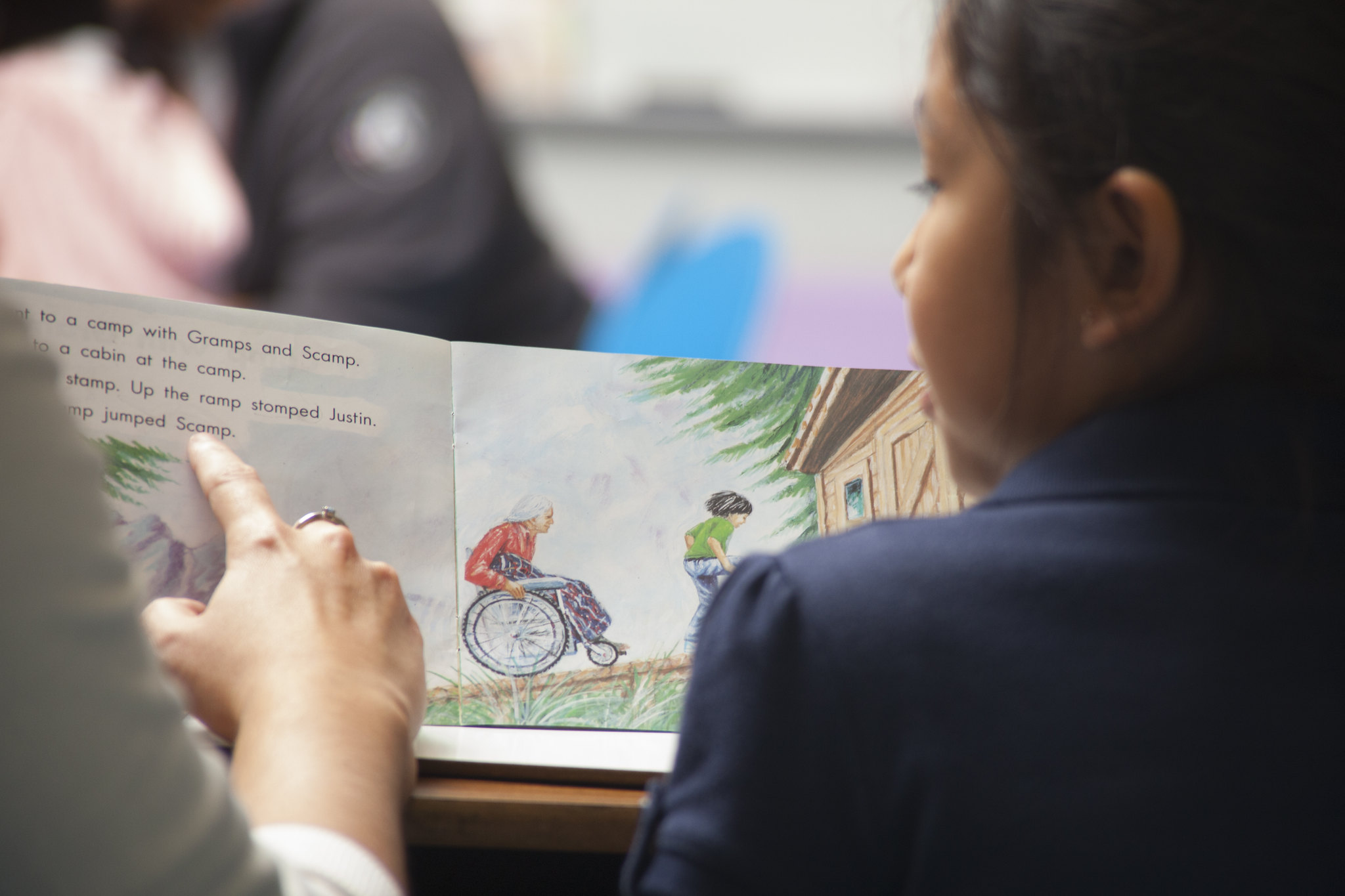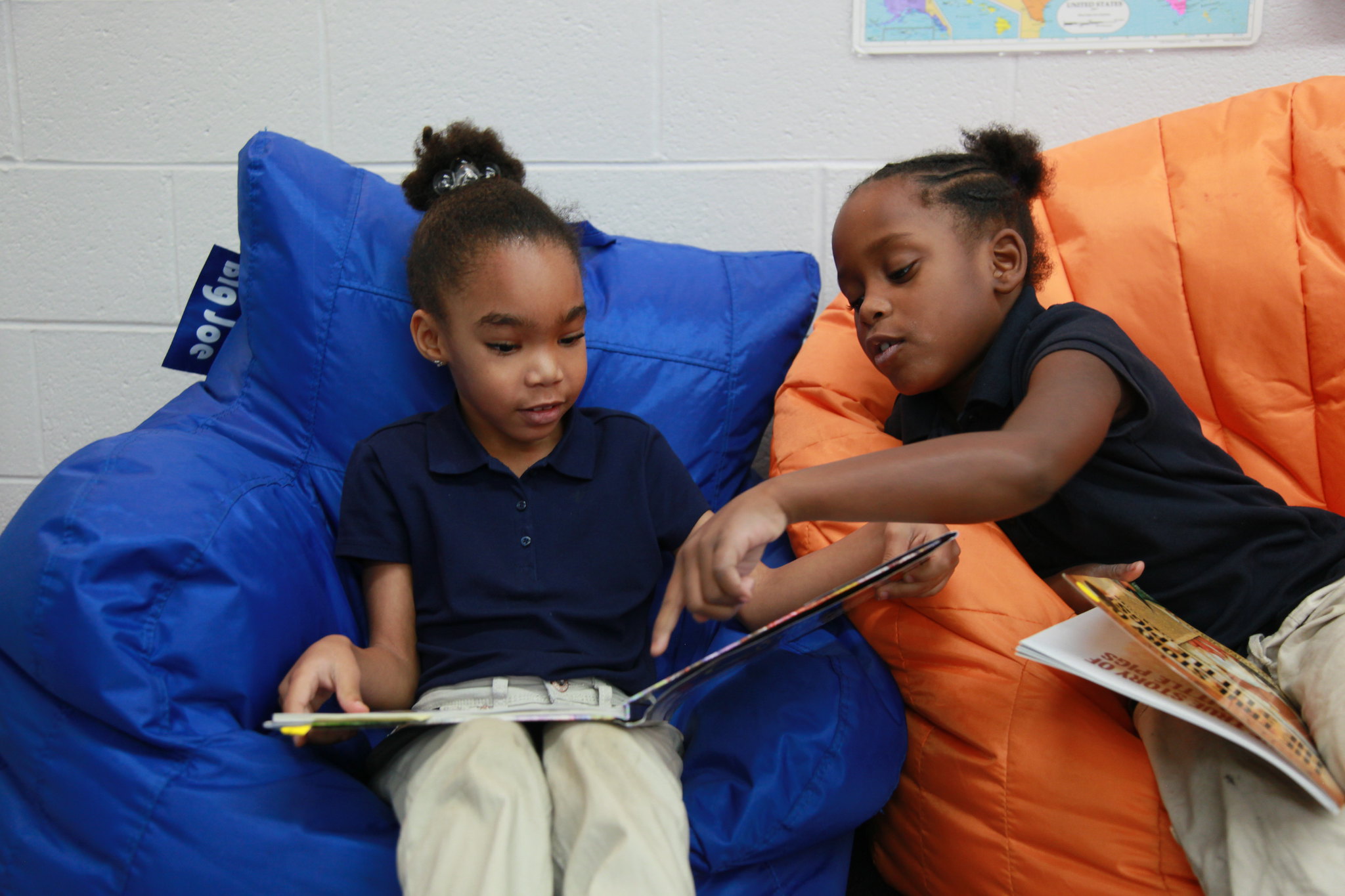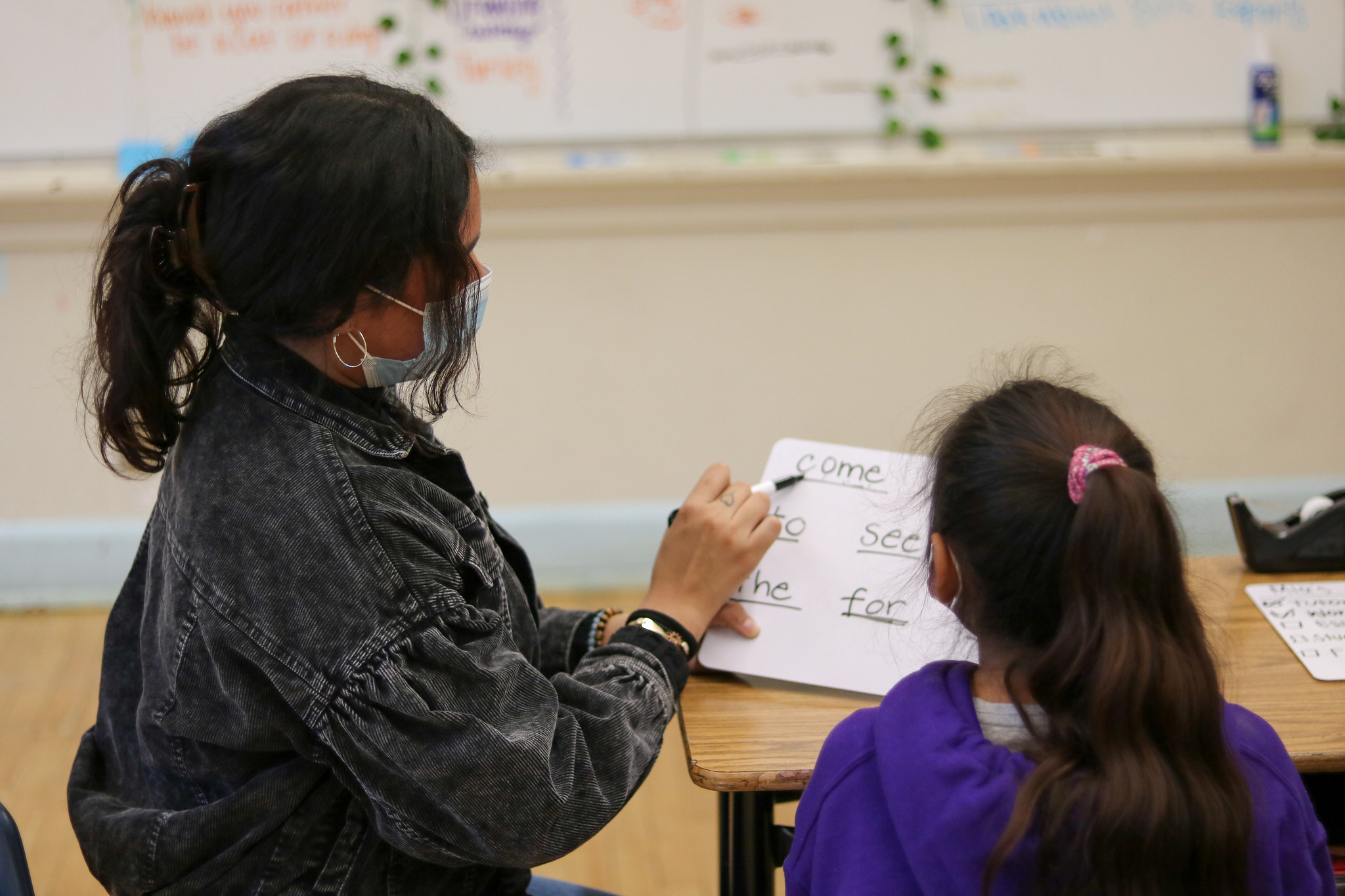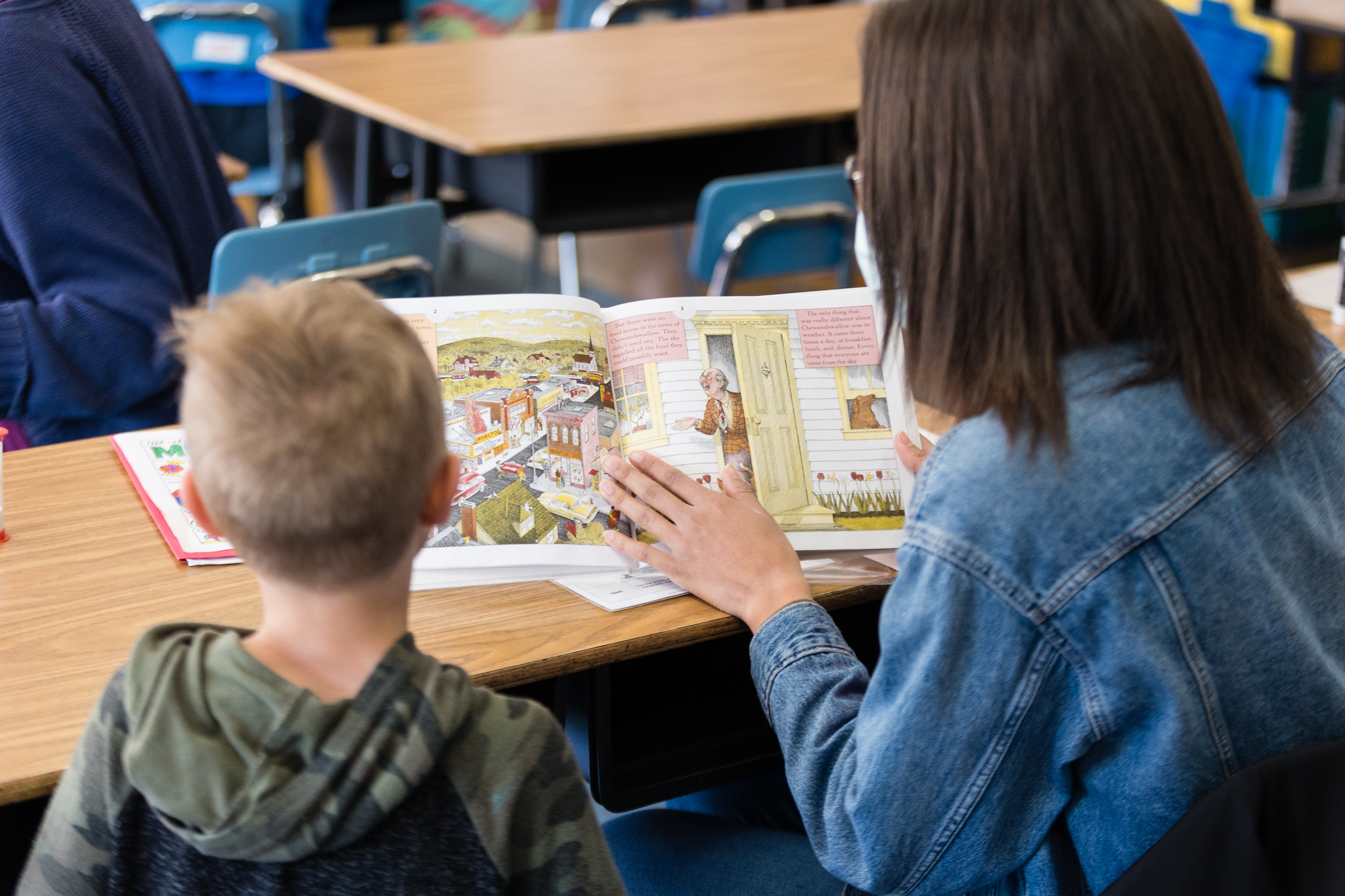June 21, 2023
The science of reading and balanced literacy | Part One: History and context of The Reading Wars

This blog is the first part of a three-part series that breaks down the debate between balanced literacy and phonics-based approaches, why there’s been a sudden shift to systematic phonics instruction, and how Reading Partners uses the science of reading to inform our curriculum.
In 2023, New York City’s public school system completely overhauled its literacy curriculum to align with the science of reading, using a structured literacy approach with a strong emphasis on phonics. The change comes in the wake of a recent report from New York’s Department of Education that found that in 2022 less than half of third-grade students were reading at grade level.
And it isn’t just New York City. School districts across the country are seeing similar reading scores among their students. And many of them are coming to the same conclusion: we haven’t been teaching our kids how to read effectively for years.
There are two approaches to teaching reading that have dominated the early education sphere for over a century: the science of reading, which is rooted in systematic phonics instruction, and a balanced literacy approach rooted in whole language instruction.
So, let’s explore what the science of reading is, how balanced literacy is different, and why educators and scientists can’t agree on one approach.

History and context of the science of reading
According to The Reading League, “The science of reading is a vast, interdisciplinary body of scientifically-based research about reading and issues related to reading and writing.” In response to this body of evidence, science of reading aligned instruction encourages educators to have an explicit and structured approach to teaching literacy skills with students focusing on phonemes, the sounds they hear in words, and phonics, mapping the sounds they hear to the letters and letter combinations they see to sound out words. This process of mapping what they hear and see is also known as “decoding.”
Phonics is rooted in the “relationships between the letters (graphemes) of written language and the individual sounds (phonemes) of spoken language.” Not only does systematic phonics instruction help students identify familiar words, it also significantly impacts their ability to sound out, or decode, new words.
Around the mid-1800s, Horace Mann, an education reformer and politician, began speaking out against The McGuffey Readers and phonics-based literacy instruction which had been the norm for the past century. Mann disagreed with the bottom-up approach of phonics and thought it would be better to have children learn words first, and thus a love of reading, before getting into the nitty gritty of understanding letters and syllables. Some say Horace Mann was the catalyst for what became known as The Reading Wars: the debate between educators and scientists over the best way to teach reading that persisted through the late twentieth century and beyond.
The two schools of thought persisted through the twentieth century. For decades, systematic phonics instruction continued to be the prevailing approach, but the 1920s saw a shift to the “whole language approach” in which students learned to read by focusing on the meaning and context of the words, rather than decoding them.
Fast forward to the 1950s and Rudolf Flesch’s book, Why Johnny Can’t Read, is published, calling for a shift back to phonics-based instruction. His book further divided the phonics and whole language groups and fueled the debates on reading that were popular in the late twentieth century.
But in the 60s, Jeanne Chall, a psychologist at the Harvard Graduate School of Education, published her book Learning to Read: The Great Debate. After years of study on the science of reading and what actually works, she “concluded that phonics instruction was far superior to look-say.”
Despite the science, The Reading Wars persisted.
At the turn of the century, the federally-funded National Reading Panel conducted a comprehensive study and released a 400-page report that concluded that there are five essential pillars to literacy instruction: phonemic awareness, phonics, vocabulary, fluency, and comprehension. Many conversations on literacy instruction tend to focus solely on phonics, but students need all five pillars to fully realize and align to the science of reading.
Even with the publishing of the National Reading Panel’s report, whole language proponents still didn’t want to nix whole language completely—they still believed that learning to read was an innate process. Thus, balanced literacy was born and rose to popularity in the early 1990s.

History and context of balanced literacy
“Balanced literacy” is an instructional approach to teaching literacy that aims to provide a well-rounded and comprehensive education in reading and writing. It emerged as a response to the limitations of the earlier “whole language” approach to literacy instruction methods and incorporates various strategies to develop students’ reading and writing skills.
The concept of balanced literacy gained broad popularity in the 1990s as a way to bridge the divides between “whole language” and heavily “phonics-based” approaches. The whole language approach emphasized the importance of meaning and context in reading unfamiliar words, while foundationally phonics-based instruction emphasized decoding and phonetic rules. However, some educators considered both approaches incomplete in addressing the diverse needs of students—enter Lucy Calkins and balanced literacy.

Lucy Calkins, as photographed by Evelyn Freja for The New York Times
Lucy Calkins is a leading figure in balanced literacy. She developed the Units of Study, which are a broad set of curricular resources for teaching reading and writing to elementary-aged kids.
Calkins’ curriculum focused on a structure of reading workshops which generally included four parts:
- Mini-Lesson: A brief, focused instruction where the teacher introduces the skill or strategy through modeling and provides guidance on how to apply it while reading independently.
- Independent Reading: Students engage in independent reading by selecting a book from their own reading level or interest and silently reading it.
- Small Group Instruction: Following independent reading, the teacher conducts small group instruction. Students are grouped based on their specific reading levels based on classroom assessments administered by teachers. The teacher may work with one group at a time, while other students engage in other reading activities.
- Sharing and Reflection: At the end of the workshop, students come together as a whole group for sharing and reflection. They have the opportunity to share their reading experiences, discoveries, or strategies with their peers.
While appealing to many educators for its openly defined and flexible format, Calkins’ approach to literacy education has significant limitations. The curriculum has come under fire in recent years for not incorporating structured phonics instruction, where students practice identifying letter sounds and then learn to string sounds together to form words. Calkin’s approach was also criticized for relying too heavily on contextual cues to guess words and their meaning, known as the three cueing system. For example, students are instructed to find a picture of a butterfly on a page and guess the word “butterfly” in the text.

While Calkins and her team have made recent concessions and updates to the Units of Study curriculum, adding more phonics instruction, leaders pursuing the evidence-based science of reading approach believe the adjustments still aren’t enough to adequately support students as they learn to read.
The backlash against balanced literacy has existed for decades, but a recent shift among school districts to more systematic phonics instruction is underway.
Read the second blog in this series on the debate between the science of reading and balanced literacy. In it, we dive into the major books, studies, podcasts, and moments where one approach prevailed over the other, and explain why the most recent move toward systematic phonics instruction is taking off.
Read the third blog in this series where we share Reading Partners’ approach to the science of reading and how our curriculum has changed over the years.












